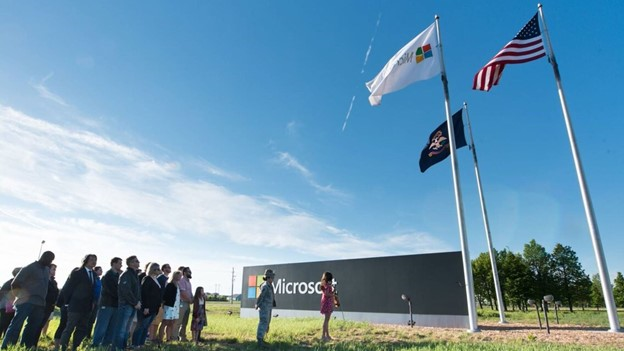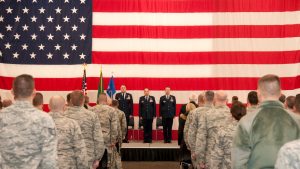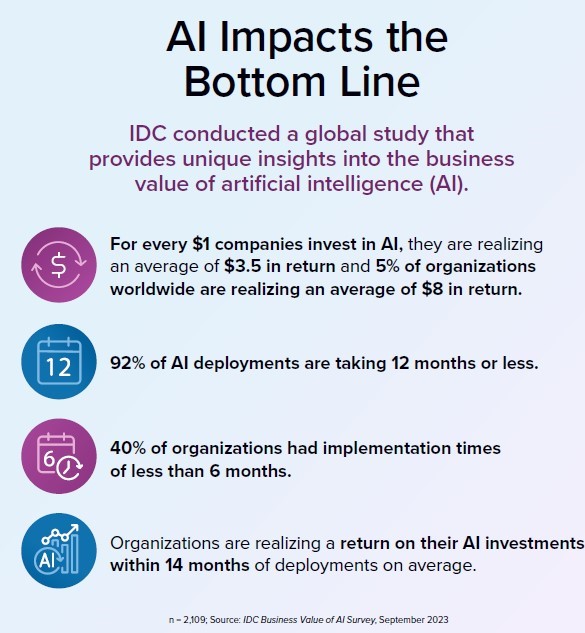As we reach the end of 2023, nearly every industry is undergoing a collective transformation – discovering entirely new ways of working due to AI advancements.
Microsoft Ignite is a showcase of the advances being developed to help customers, partners and developers achieve the total value of Microsoft’s technology and reshape the way work is done.
As we round out the year, there are strong signals of AI’s potential to transform work. Take our latest Work Trend Index. Eight months ago, we introduced Copilot for Microsoft 365 to reduce digital debt and increase productivity so people can focus on the work that is uniquely human. What everyone wants to know now is: Will Copilot really change work, and how? Our research, using a combination of surveys and experiments, shows the productivity gains are real:
- 70% of Copilot users said they were more productive and 68% said it improved the quality of their work; 68% say it helped jumpstart the creative process.
- Overall, users were 29% faster at specific tasks (searching, writing and summarizing).
- Users caught up on a missed meeting nearly 4x faster.
- 64% of users said Copilot helps them spend less time processing email.
- 87% of users said Copilot makes it easier to get started on a first draft.
- 75% of users said Copilot “saves me time by finding whatever I need in my files.”
- 77% of users said once they use Copilot, they don’t want to give it up.
Today, we will make about 100 news announcements that touch on multiple layers of an AI-forward strategy, from adoption to productivity to security. We’ll zoom in on a few key areas of impact below.
Rethinking cloud infrastructure
Microsoft has led with groundbreaking advances like partnerships with OpenAI and the integration of ChatGPT capabilities into tools used to search, collaborate, work and learn. As we accelerate further into AI, Microsoft is rethinking cloud infrastructure to ensure optimization across every layer of the hardware and software stack.
At Ignite we are announcing new innovations across our datacenter fleet, including the latest AI optimized silicon from our industry partners and two new Microsoft-designed chips.
- Microsoft Azure Maia, an AI Accelerator chip designed to run cloud-based training and inferencing for AI workloads such as OpenAI models, Bing, GitHub Copilot and ChatGPT.
- Microsoft Azure Cobalt, a cloud-native chip based on Arm architecture optimized for performance, power efficiency and cost-effectiveness for general purpose workloads.
- Additionally, we are announcing the general availability of Azure Boost, a system that makes storage and networking faster by moving those processes off the host servers onto purpose-built hardware and software.
Complementing our custom silicon, we are expanding partnerships with our silicon providers to provide infrastructure options for customers.
- We’ll be adding AMD MI300X accelerated virtual machines (VMs) to Azure. The ND MI300 VMs are designed to accelerate the processing of AI workloads for high range AI model training and generative inferencing, and will feature AMD’s latest GPU, the AMD Instinct MI300X.
- The preview of the new NC H100 v5 Virtual Machine Series built for NVIDIA H100 Tensor Core GPUs, offering greater performance, reliability and efficiency for mid-range AI training and generative AI inferencing. We’re also announcing plans for the ND H200 v5 Virtual Machine Series, an AI-optimized VM featuring the upcoming NVIDIA H200 Tensor Core GPU.
Extending the Microsoft Copilot experience
Over the past year we have continued to refine our vision for Microsoft Copilot, a set of tools that help people achieve more using AI. To go beyond individual productivity, we are extending Microsoft Copilot offerings across solutions to transform productivity and business processes for every role and function – from office workers and front-line workers to developers and IT professionals.
Microsoft is the Copilot company, and we believe in the future there will be a Copilot for everyone and for everything you do. Some of our Copilot-related announcements and updates include:
- Microsoft Copilot for Microsoft 365: This month, Copilot for Microsoft 365 became generally available for enterprises. Already customers like Visa, BP, Honda and Pfizer and partners like Accenture, EY, KPMG, Kyndryl and PwC are using Copilot. We continue to bring new value, based on learnings from our Early Access Program and other research channels. The new Microsoft Copilot Dashboard shows customers how Copilot is impacting their organization – with insights like those found in our Work Trend Index. We’re introducing new personalization capabilities that help Copilot offer responses that are tailored to your unique preferences and role. To empower teamwork, new features for Copilot in Outlook help you prep for meetings, and during meetings, new whiteboarding and note-taking experiences for Copilot in Microsoft Teams keep everyone on the same page. And customers who need it can now use Copilot during a meeting without transcription retention. When you give Copilot a seat at the table, it goes beyond being your personal assistant to helping the entire team – check out the Microsoft 365 blog for updates across the suite including PowerPoint, Excel, Microsoft Viva and more.
- Microsoft Copilot Studio: AI transformation begins by tapping into an organization’s unique data and workflows. Microsoft Copilot Studio is a low-code tool designed to customize Microsoft Copilot for Microsoft 365 by integrating business-critical data and build custom copilots for internal or external use. Copilot Studio works with connectors, plugins and GPTs, allowing IT teams to steer Copilot to the best data sources for specific queries.
- Microsoft Copilot for Service: The newest copilot to provide role-based support helps businesses accelerate their AI transformation of customer service. Copilot for Service includes Microsoft Copilot for Microsoft 365 and helps extend existing contact centers with generative AI. In customer interactions, agents can ask Copilot for Service questions in natural language and receive relevant insights based on data sources from knowledge repositories, leading to faster and smarter resolutions.
- Copilot in Microsoft Dynamics 365 Guides: Combining the power of generative AI and mixed reality, this copilot helps frontline workers complete complex tasks and resolve issues faster without disrupting workflow. Available first on HoloLens 2, the hands-free copilot will help service industry professionals use natural language and human gestures to offer interactive guidance through content and holograms overlaid on the equipment.
- Microsoft Copilot for Azure: This is an AI companion for IT that simplifies day-to-day IT administration. More than just a tool, it is a unified chat experience that understands the user’s role and goals, and enhances the ability to design, operate and troubleshoot apps and infrastructure. Copilot for Azure helps IT teams gain new insights into their workloads, unlock untapped Azure functionality and orchestrate tasks across both cloud and edge.
- Bringing Copilot to everyone: Our efforts to simplify the user experience and make Copilot more accessible to everyone starts with Bing, our leading experience for the web. Bing Chat and Bing Chat Enterprise will now simply become Copilot. With these changes, when signed in with a Microsoft Entra ID, customers using Copilot in Bing, Edge and Windows will receive the benefit of commercial data protection. Over time, Microsoft will also expand the eligibility of Copilot with commercial data protection to even more Entra ID (formerly Azure Active Directory) users at no additional cost. Copilot (formerly Bing Chat and Bing Chat Enterprise) will be out of preview and become generally available starting Dec. 1. Learn more here.
Reinforcing the data and AI connection
AI is only as good as the data that fuels it. That’s why Microsoft is committed to creating an integrated, simplified experience to connect your data to our AI tools.
Microsoft Fabric is part of that solution. Available now, Microsoft Fabric reshapes how teams work with data by bringing everyone together on a single, AI-powered platform that unifies all those data estates on an enterprise-grade data foundation.
Copilot in Microsoft Fabric also integrates with Microsoft Office and Teams to foster a data culture to scale the power of data value creation throughout the organization. We’ve made more than 100 feature updates since Build and expanded our ecosystem with industry leading partners, and have over 25,000 customers including Milliman, Zeiss, London Stock Exchange and EY using it today.
Unlocking more value for developers with Azure AI
We continue to expand choice and flexibility in generative AI models to offer developers the most comprehensive selection. With Model-as-a-Service, a new feature in the model catalog we announced at Microsoft Build, pro developers will be able to easily integrate the latest AI models, such as Llama 2 from Meta and upcoming premium models from Mistral, and Jais from G42, as API endpoints to their applications. They can also customize these models with their own data without needing to worry about setting up and managing the GPU infrastructure, helping eliminate complexity.
With the preview of Azure AI Studio, there is now a unified and trusted platform to help organizations more easily explore, build, test and deploy AI apps – all in one place. With Azure AI Studio, you can build your own copilots, train your own, or ground other foundational and open models with data that you bring.
And Vector Search, a feature of Azure AI Search, is now generally available, so organizations can generate highly accurate experiences for every user in their generative AI applications.
The new GPT-3.5 Turbo model with a 16K token prompt length will be generally available and GPT-4 Turbo will be in public preview in Azure OpenAI Service at the end of November 2023. GPT-4 Turbo will enable customers to extend prompt length and bring even more control and efficiency to their generative AI applications.
GPT-4 Turbo with Vision is coming soon to preview and DALL·E 3 is now available in public preview in Azure OpenAI Service, helping fuel the next generation of enterprise solutions along with GPT-4, so organizations can pursue advanced functionalities with images. And when used with our Azure AI Vision service, GPT-4 Turbo with Vision even understands video for generating text outputs, furthering human creativity.
Enabling the responsible deployment of AI
Microsoft leads the industry in the safe and responsible use of AI. The company has set the standard with an industry-leading commitment to defend and indemnify commercial customers from lawsuits for copyright infringement – the Copilot Copyright Commitment (CCC).
Today, Microsoft takes its commitment one step further by announcing the expansion of the CCC to customers using Azure OpenAI Service. The new benefit will be called the Customer Copyright Commitment. As part of this expansion, Microsoft has published new documentation to help Azure OpenAI Service customers implement technical measures to mitigate the risk of infringing content. Customers will need to comply with the documentation to take advantage of the benefit.
And Azure AI Content Safety is now generally available, helping organizations detect and mitigate harmful content and create better online experiences. Customers can use Azure AI Content Safety as a built-in-safety system within Azure OpenAI Service, for open-source models as part of their prompt engineering in Azure Machine Learning, or as a standalone API service.
Introducing new experiences in Windows to empower employees, IT and developers
We continue to invest in and build Windows to empower people to navigate the platform shift to AI. We are thrilled to introduce new experiences in Windows 11 and Windows 365 for IT and employees that unlock new ways of working and make more AI accessible across any device. To further our mission of making Windows the home for developers and the best place for AI development, we announced a host of new AI and productivity tools for developers, including Windows AI Studio.
Announcing NVIDIA AI foundry service
Aimed at helping enterprises and startups supercharge the development, tuning and deployment of their own custom AI models on Microsoft Azure, NVIDIA will announce their AI foundry service running on Azure. The NVIDIA AI foundry service pulls together three elements – a collection of NVIDIA AI Foundation models, NVIDIA NeMo framework and tools, and NVIDIA DGX Cloud AI supercomputing and services – that give enterprises an end-to-end solution for creating custom generative AI models. Businesses can then deploy their models with NVIDIA AI Enterprise software on Azure to power generative AI applications, including intelligent search, summarization and content generation.
Strengthening defenses in the era of AI
The threat landscape has evolved dramatically in recent years, and at Microsoft Ignite we are introducing new technologies across Microsoft’s suite of security solutions to help defenders make the world a safer place.
Microsoft Sentinel and Microsoft Defender XDR (previously Microsoft 365 Defender) will be combined to create the industry’s first Unified Security Operations Platform, with embedded Security Copilot experiences. With built-in generative AI, it’s a single, powerful experience focused on protecting threats at machine speed and aiding defenders by simplifying the complexity of their environment.
Additionally, the expansion of Security Copilot embedded within Intune, Purview and Entra will help IT administrators, compliance units and identity teams simplify complex scenarios. In Entra, identity administrators can quickly troubleshoot identity access. In Purview, data security alerts deliver rich context to help resolve problems faster. In Intune, IT administrators can use “what if” analysis to keep business running while improving governance and compliance.
And that’s just a snapshot of what we’ll be announcing at Ignite. As a reminder, you can view keynote sessions from Satya Nadella, Rajesh Jha and Jared Spataro, Charlie Bell and Vasu Jakkal, and Scott Guthrie live or on-demand.
Plus, you can get more on all these announcements by exploring the Book of News, the official compendium of all today’s news, and the product blogs below.
RELATED:
Watch the keynotes and get all the latest photos, videos and more from Microsoft Ignite
The online event for Microsoft Ignite
With a systems approach to chips, Microsoft aims to tailor everything ‘from silicon to service’ to meet AI demand
Introducing new Copilot experiences to boost productivity and elevate customer experiences across the organization
Simplify IT management with Microsoft Copilot for Azure – save time and get answers fast
Introducing Copilot Studio and New Features in Copilot for Microsoft 365
Announcing general availability of vector search and semantic ranker in Azure AI Search
GPT-4 Turbo with Vision on Azure OpenAI Service
Azure AI Content Safety helps mitigate harmful content
Windows AI Studio helps enterprises and developers jumpstart local AI development
Making the world a safer place in the era of AI
The post Microsoft Ignite 2023: AI transformation and the technology driving change appeared first on The Official Microsoft Blog.
Source: The Official Microsoft Blog









